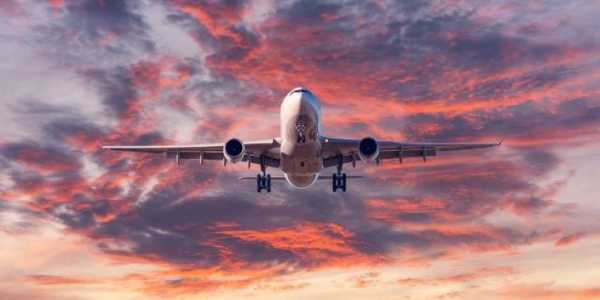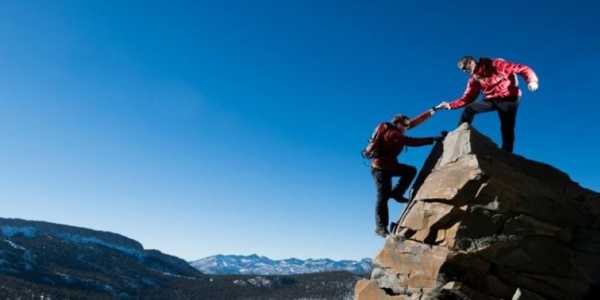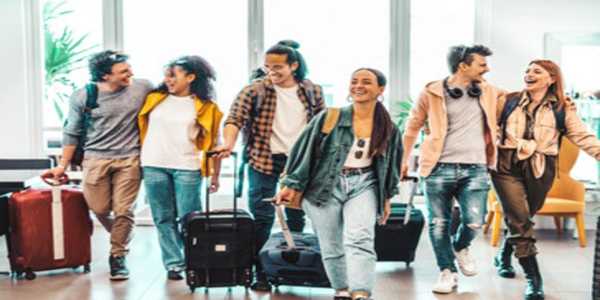How To Stay Safe When Traveling Solo (Without Missing The Fun)
Are you thinking of traveling solo? It's an exciting way to explore new places and gain personal freedom, but staying safe is essential. Whether it's your first solo trip or you've been on the road before, knowing how to protect yourself and your belongings is key to a stress-free experience. Let's discuss some simple, practical tips to make your solo adventure both secure and enjoyable.
The Basics Of Solo Travel Safety
Solo travel gives you flexibility but also requires vigilance. Unlike traveling in a group, you’re responsible for every decision and your own safety.
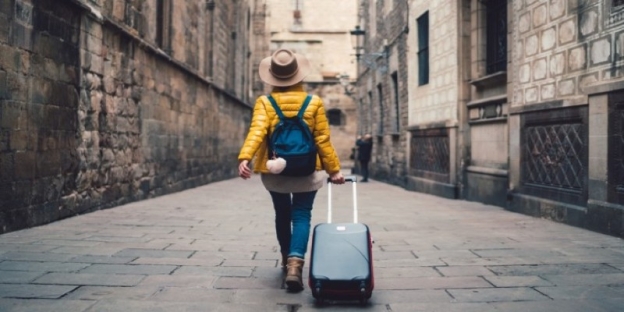
In a 2023 Solo Traveler World survey, 63% of solo travelers named safety as their top concern. Safety experts advise:
- Share your itinerary with a trusted contact.
- Use registered transportation only.
- Book accommodation with verified reviews and security measures.
Experienced solo travelers consistently emphasize:
- Trust your gut. If something feels wrong, walk away.
- Avoid deserted areas after dark.
- Secure valuables in anti-theft bags or hidden pouches.
As travel writer Kristin Addis notes, “Confidence and preparation can help you go just about anywhere safely.” Awareness—not fear—makes solo travel enriching.
Preparation: Setting The Stage For Safe Solo Travel
The key to a safe solo trip starts well before you even leave home. A little preparation goes a long way in ensuring your journey is smooth and secure. Here's how to set the stage for a safe solo adventure.
Choosing The Right Destination For Solo Travel
Not all destinations are created equally when it comes to safety. While some places are famous for being safe and welcoming to solo travelers, others might pose more risks, especially for those traveling alone. Before booking a flight, it's essential to research your destination.
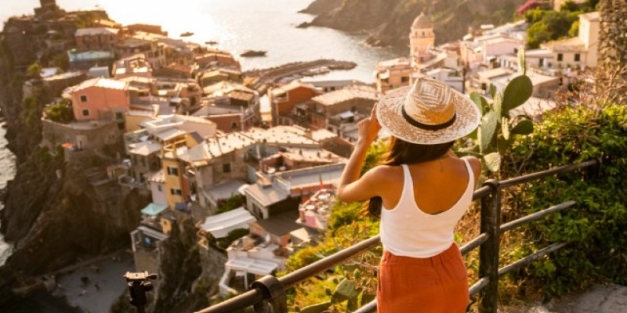
Begin by reviewing travel advisories issued by government agencies. For example, the U.S. Department of State regularly publishes safety information and travel advisories for specific countries. These advisories often highlight areas of political instability, health risks, and natural disasters, so you can make an informed decision.
Crime rates are another important factor to consider. While no place is entirely free from crime, some cities or countries have higher rates of petty theft, scams, or violent crime, particularly in areas frequented by tourists. Reading up on recent news and travelers' experiences can provide valuable insights.
Lastly, consider the local culture and how it might affect your safety. Some countries have stricter laws regarding behavior, dress codes, and social norms that could impact you as a solo traveler. For instance, knowing local customs about solo women travelers or LGBTQ+ rights can help you navigate unfamiliar situations with respect and caution.
Packing Smart
Pack light but cover your bases for safety and comfort.
Safety Essentials:
- Travel lock for bags
- Money belt or hidden pouch
- Personal safety alarm
Protecting your Money:
- Split cash between a wallet and hidden pouch
- Use credit cards rather than large amounts of cash
- Store a backup card separately
Documents and Health:
- Carry key documents (passport, insurance, emergency contacts) in a secure, easy-to-access place like a neck pouch or cross-body bag
- Bring enough prescription medication for the full trip
- Carry a basic first-aid kit and check for nearby pharmacies or clinics in your destination
Extra Peace of Mind:
Enroll in the Smart Traveler Enrollment Program (STEP) through the U.S. State Department. It lets you register your trip with local U.S. embassies and receive alerts or assistance during emergencies.
With smart packing, you’re better prepared to stay safe and focused on enjoying your trip.
Staying Safe During Your Solo Trip
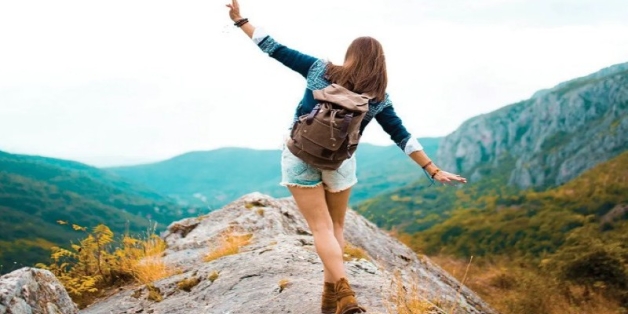
Once you've packed and planned, it's time to hit the road. Whether you're visiting bustling cities or remote destinations, staying aware and taking precautions on the go will help you stay safe. Here are key safety tips to keep you secure throughout your trip.
Personal Safety In Public Spaces
Public areas like airports, bus stations, and tourist sites are common spots for theft and scams. Staying alert is your best defense.
To Protect Yourself:
- Keep your belongings secured. Use zipped bags and carry them close. Avoid setting items down, even briefly.
- Limit distractions. Stay aware of your surroundings instead of focusing on your phone or map.
- Trust your instincts. If someone seems overly friendly or a location feels wrong, walk away without hesitation.
- Avoid showing valuables. Don’t wear flashy jewelry or use expensive electronics in public. Anti-theft bags with lockable zippers and hidden compartments are ideal.
- Dress to blend in. Tourists often stand out. Wearing neutral clothing and respecting local dress norms can help you avoid unwanted attention.
- Stay in well-lit, populated areas. If you're walking after dark, choose busier streets and avoid alleys or shortcuts.
Expert tip: A report by the International Association of Travel Safety Professionals (2023) noted that travelers who actively avoided high-risk behaviors—like wearing expensive accessories or walking alone late at night—faced 70% fewer incidents.
Solo travel doesn’t mean isolating yourself—it means being smart about how and where you engage with your environment. Alertness, preparation, and subtle behavior adjustments go a long way in keeping you safe while exploring public spaces.
Health And Medical Security While Traveling Alone
Plan for your health and medical needs, as solo travelers may not have immediate access to support if they become sick or injured.
Before your trip:
- Consult your doctor to confirm the vaccinations required for your destination.
- Pack a small first-aid kit (band-aids, pain relievers, basic over-the-counter medicines).
- Bring enough prescription medication for the entire trip, plus the prescription for refills.
In case of emergency:
- Identify the nearest hospital or doctor’s office at your destination.
- Use country-specific apps or websites that list medical facilities and travel health tips.
- Keep emergency contact numbers written down and stored digitally for easy access.
Daily habits to stay healthy:
- Stay hydrated, eat balanced meals, and rest to avoid exhaustion.
- Be cautious with food and water in places where standards differ to reduce the risk of illness.
Safe Accommodations: Where To Stay For Maximum Security
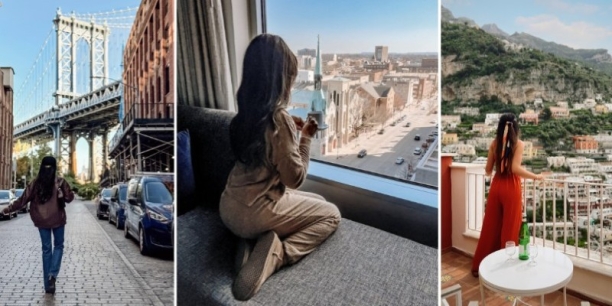
When traveling solo, where you stay can significantly impact your overall safety. Whether you choose a hotel, hostel, or a rental like Airbnb, it's essential to pick accommodations that prioritize security and comfort. Here are some tips on selecting the safest place to stay during your solo trip.
Choosing Safe Lodging For Solo Travelers
Not all accommodations are created equal, especially when it comes to solo travel safety. Hotels, hostels, and rental properties each have their pros and cons. The key is to research carefully and select a place that feels secure and comfortable.
Start by reading reviews on trusted platforms like TripAdvisor or Google Reviews. Look for comments that highlight the security features of the accommodation, such as 24-hour reception, secure entry systems (e.g., key cards or digital locks), and well-lit public areas. A place with good lighting and visible security staff can deter unwanted visitors and ensure a safer stay.
When booking through Airbnb or other vacation rental services, carefully review the host's profile, previous guest reviews, and the neighborhood to ensure a positive experience. Select properties that feature security measures, such as locks on all windows and doors. If you can, check if the host provides a secure safe for your valuables.
In addition to the accommodations themselves, the area surrounding your lodging plays a crucial role in your safety. Stick to well-populated, well-lit neighborhoods and avoid areas known for high crime rates. You can often find neighborhood safety reviews from other travelers to help guide your choice. Websites like Crime Data Explore can provide crime statistics and safety information specific to your destination.
Protecting Your Valuables In Your Room
Securing your belongings is a priority when traveling solo, especially in unfamiliar environments. With no one else to help watch over your things, you’ll need to take practical steps to minimize risk.
Most hotels and rentals offer in-room safes or lockers. Use them for passports, extra cash, and electronics. Avoid leaving anything visible, even for a short absence.
In shared spaces like hostels, a few added precautions help:
- Use a lockable suitcase or bag when lockers aren’t provided
- Choose hostels with security features like cameras and coded entry
- Avoid storing valuables in open areas, even briefly
For expensive gear like cameras or laptops, consider:
- Anti-theft bags with cut-resistant straps and built-in locks
- Cable locks to secure items to furniture when safes aren’t available
To reduce the chance of losing everything at once:
- Split your money—keep a small amount in a hidden wallet or money belt
- Lock larger sums and important documents in the room safe
- Avoid carrying all valuables when out exploring
These simple steps help you protect your belongings without adding stress to your trip. Safe storage options and smart habits make a big difference in keeping your solo journey secure and focused on enjoyment.
Staying Safe When Meeting Locals
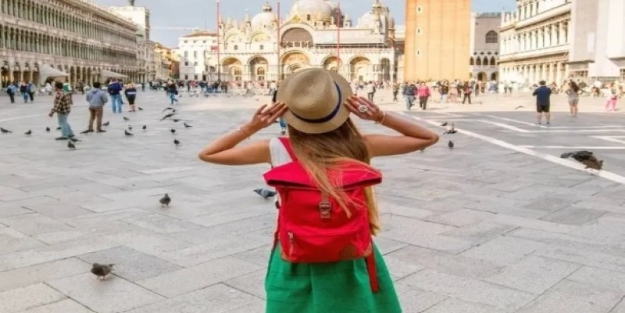
One of the joys of solo travel is the opportunity to meet new people, whether they’re locals or fellow travelers. However, meeting strangers while traveling comes with its own set of safety risks. Here’s how to enjoy new connections without compromising your security.
Meeting New People: Staying Cautious
While most locals you meet during your travels will be friendly and welcoming, it's important to approach every new encounter with caution. Solo travelers are often perceived as vulnerable, so it's crucial to remain vigilant and establish clear boundaries.
When meeting someone new, especially in informal settings like cafes, bars, or local markets, trust your instincts. If something feels off about the situation, it’s okay to politely excuse yourself and leave. Always meet people in public spaces where there are plenty of other people around, and avoid private or secluded places until you know the person better.
If you're meeting someone online through platforms like Meetup or Couchsurfing, always follow the platform's safety guidelines. Arrange to meet in a public area, inform a friend or family member of your plans, and share the details of the meetup, including the location and time. It's also a good idea to have a backup plan in case you need to leave quickly.
Lastly, remember that alcohol or other substances can impair your judgment. If you decide to meet someone for drinks, limit your consumption and keep a close eye on your drink to avoid potential tampering. Never accept drinks from someone you don't trust completely.
Using Ride Services And Local Transportation Safely
Public transportation and ride-sharing services, such as Uber and Lyft, can be convenient and cost-effective ways to get around. Still, they also pose safety risks, especially when traveling alone. To stay secure, use these services wisely.
When using ride-sharing apps, always verify the driver's identity before getting in the car. Check the license plate number, make, and model of the car, as well as the driver's photo, to ensure they match what's displayed on the app. It's also helpful to share your ride details with a friend or family member through the app's tracking feature.
If you're taking a taxi, only use authorized, registered services. Avoid accepting rides from unmarked or unofficial cabs, as they may not be safe. Some destinations have designated taxi stands at airports or bus terminals, so always go to these areas to find a legitimate taxi.
For public transportation, try to avoid traveling at night or in isolated areas. Pickpockets often target crowded buses and trains, so keep your belongings close and remain vigilant. In some cities, it's better to avoid taking the subway alone late at night, as certain areas may be poorly lit or have fewer passengers.
By taking these precautions, you can ensure that your transportation experience remains safe and stress-free, leaving you free to focus on enjoying your solo adventure.
Navigating Emergency Situations While Traveling Solo
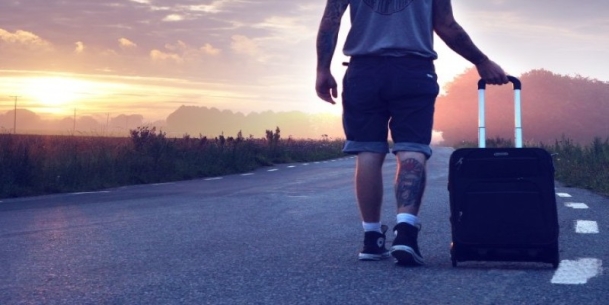
Despite the best precautions, emergencies can still arise. Whether it’s a medical issue, a lost passport, or a sudden change in your plans, knowing what to do in an emergency is crucial for any solo traveler. Here's how to handle these situations if they arise.
What To Do In Case Of An Emergency?
Emergencies can range from medical issues to lost documents. Knowing how to respond can help you stay safe and reduce stress.
Medical Emergencies
- Locate the nearest hospital or clinic upon arrival.
- Use local emergency numbers (e.g., 112 or 911).
- Contact your health insurance provider for coverage details.
- Keep a written and digital list of emergency contacts.
Legal or Safety Problems
- If detained or in trouble, call your embassy.
- Embassies offer legal help, lawyer contacts, and evacuation support.
- Save local police contact info in your phone.
Lost or Stolen Documents
- Report incidents to local authorities immediately.
- Visit your embassy or consulate to replace documents.
- Call your bank or credit card company to block lost cards and prevent fraud.
Having these steps prepared in advance can help you act quickly and stay calm during unexpected situations.
How To Stay In Touch With Family And Friends?
Staying connected with family or friends during your solo travels is vital, not only for emotional support but also for safety. Before you leave, share your itinerary, including accommodations and planned activities, with a trusted person back home. This way, they’ll know where you are at all times, and they can help if anything goes wrong.
Set up a regular check-in system. Whether it's through text messages, phone calls, or an app, it's essential to stay in touch periodically. This is especially crucial if you're traveling to remote areas with less access to communication.
Use location-sharing apps like Google Maps or Find My Friends, which allow you to share your live location with someone you trust. These apps can also alert them if something seems unusual, such as if you’ve stopped moving for a long period.
Even when traveling alone, knowing someone is watching your back can provide significant peace of mind.
Solo Travel Security Apps And Tools
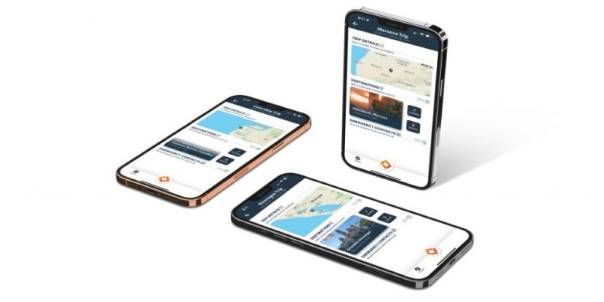
Technology can be a powerful tool for enhancing your safety while traveling solo. There are many apps and digital tools designed to help you stay secure and in touch with loved ones, no matter where you are.
Must-Have Apps For Solo Travelers
When it comes to safety, your smartphone can be your best ally. Here are some essential apps to consider downloading before you go:
TravelSafe: This app provides a list of emergency numbers for police, medical help, and embassies in over 200 countries, ensuring you can access emergency services wherever you are.
Google Maps: Not only does it help with navigation, but it also offers real-time updates on traffic conditions, public transportation routes, and even the safety level of areas you’re traveling through.
TripIt: This app organizes your travel plans, including flights, accommodation, and activities, and makes it easier to share your itinerary with friends and family.
Maps.me: A fantastic offline map app that lets you download maps of cities or countries in advance, helping you navigate without worrying about data charges or internet access.
Using Technology For Peace Of Mind
In addition to safety-specific apps, general communication apps like WhatsApp, Viber, and Skype can help you stay connected with loved ones in real-time. If you're traveling to a location with unreliable internet or phone signals, consider using a satellite phone or a portable Wi-Fi device.
For added peace of mind, consider using travel security tools, such as a virtual private network (VPN), to protect your personal information and maintain privacy while using public Wi-Fi networks. Using a VPN helps prevent hackers from accessing sensitive data, such as your bank details or emails.
By leveraging technology in your travel preparations and throughout your journey, you can stay connected, protected, and informed, making your solo trip much more secure.
Conclusion
Traveling solo can be one of the most rewarding experiences of your life. Still, only if you prioritize your safety. By taking proactive steps before, during, and after your trip, you can enjoy the freedom of solo travel without worry. Always stay alert, trust your instincts, and utilize the available tools and resources to maintain your safety.
Was this helpful? Share your thoughts
- Learned practical methods
- Solved my questions
- Inspired new ideas
-
![Don’t Book A Flight Before You Read This Secret Guide]() Don’t Book A Flight Before You Read This Secret Guide
Don’t Book A Flight Before You Read This Secret Guide -
Searching for flights can be overwhelming. Prices change constantly, hidden fees add up, and sometimes the “cheapest” option isn’t the best deal. The truth is, most travelers end up paying more than they should. This guide breaks down proven strategies and tools that will save you money, help you choose smarter, and make sure you get the most value before booking your next flight.
Explore More
-
![Top 23 Mountain Destinations For Adventure Seekers]() Top 23 Mountain Destinations For Adventure Seekers
Top 23 Mountain Destinations For Adventure Seekers -
Ever wonder why some trips change you—and others just fill your camera roll? The answer often lives above the tree line. This guide explores mountain travel destinations, providing practical details such as seasons, terrain, access, safety, culture, and how to select challenges that feel well-earned.
Explore More
